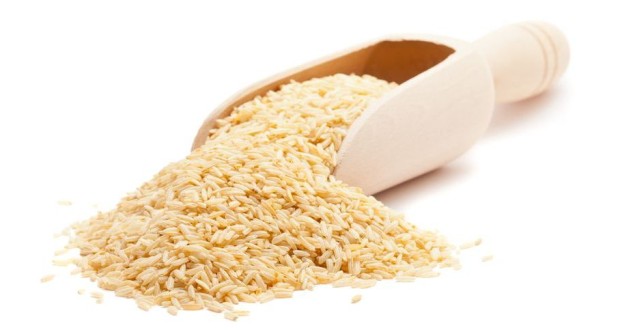Rice may not be the most popular food in the United States – that honor would arguably go to candidates such as cheeseburgers or hot dogs – but it still has enough fans to support a $34 billion industry in the United States. Rice is generally seen as a healthy food, and Americans tend to be partial to the white-colored form of this cereal grain. But what if white rice wasn’t all it’s cracked up to be? Surprising as it might sound, the nutritional values of white rice pale in comparison to its lesser-known sibling – brown rice.
The Head to Head Comparison
White and Brown rice are more than just closely-related types of cereal grains; both are actually the same grain produced by the same plant. The characteristics that distinguish brown and white rice result from how these grains are processed. To make white rice, food producers first remove the grain’s outermost layer, a part of the plant that is inedible for human consumption. The bran and germ layers are then subsequently extracted from the rice grain, leaving behind a polished and appealing end product. When it comes to brown rice, however, both the bran and germ sections are left completely untouched.
The presence (or lack thereof) of the bran and germ layers doesn’t just determine the color of the rice; it also greatly impacts the rice’s effect on the human body. Because it gets to keep its bran and germ sections, brown rice has a distinct nutritional edge over white rice. The following details illustrate why brown rice makes for the superior choice at the grocery store:
- When the bran and germ are removed, the nutrient supplies of white rice take a major hit. The milling process causes white rice to lose 67 percent of its vitamin B3, 80 percent of its vitamin B1, 60 percent of its iron and half of its magnesium and phosphorus reserves.
- By the time its manufacturing process is complete, white rice has been completely stripped of its fiber content. It also loses all of its essential fatty acids.
- One cup of cooked brown rice provides the body with 14% of its daily fiber needs. Fiber allows the body to better purge itself of bacteria and other waste products. It helps prevent worrisome spikes in blood sugar levels, which can lead to excessive eating and many other distressing symptoms.
- Given the institute’s sterling reputation, studies from Harvard University tend to garner a large amount of attention and respect. So it is worth noting that a Harvard University study found that whole grains, including brown rice, can keep women fit and trim well into adulthood.
- Speaking of Harvard University, the Ivy League behemoth recently published a report on the link between white rice and diabetes. In a surprising conclusion, the study found that a person’s risk of diabetes increased 10% with every 5.5 oz serving of white rice.
- News stories about cholesterol seem to pop up on a regular basis. There is good reason why cholesterol gets lots of time in the spotlight, as high levels of LDL cholesterol are well-known causes of heart disease and stroke. Once again, a whole grain diet can prove useful in preventing such undesirable conditions, with one study linking whole grains to lower levels of LDL cholesterol. Brown rice can simultaneously increase HDL cholesterol, often referred to as the “good” type of cholesterol.
- Good bone health is usually associated with calcium-rich diets. While there is no doubting the bone-boosting properties of calcium, it is important to remember that other nutrients contribute greatly to bone density and durability. One such nutrient, magnesium, can be found in abundance in brown rice, to the tune of 21% daily value in one cup.
- Ever heard of phytonutrients? Don’t feel bad if the answer is no, since these chemical compounds don’t get nearly as much press as other vitamins and minerals. Despite this relative obscurity, phytonutrients represent a very useful tool for your body, serving to reduce inflammation and kill off dangerous free radicals. A bowl of brown rice makes for an excellent source of phytonutrients, rivaling most fruits and vegetables in terms of phytonutrient content.
- Diabetes, heart disease and stroke make for an unholy trinity of ailments frequently caused by poor diet and lifestyle. What many people fail to realize is that all three conditions can all be triggered by Metabolic Syndrome. This disease causes fat to accumulate near the abdomen and negates the effects of insulin within the body, hastening the onset of diabetes, cardiovascular problems and blood clots. Fortunately, a diet rich in whole grain products can keep this condition at bay. Research has found that regular consumption of whole grains can reduce your risk of Metabolic Syndrome by as much as 38 percent.
 Natural Knowledge 24/7 Educate yourself with nutrition, health and fitness knowledge.
Natural Knowledge 24/7 Educate yourself with nutrition, health and fitness knowledge.






